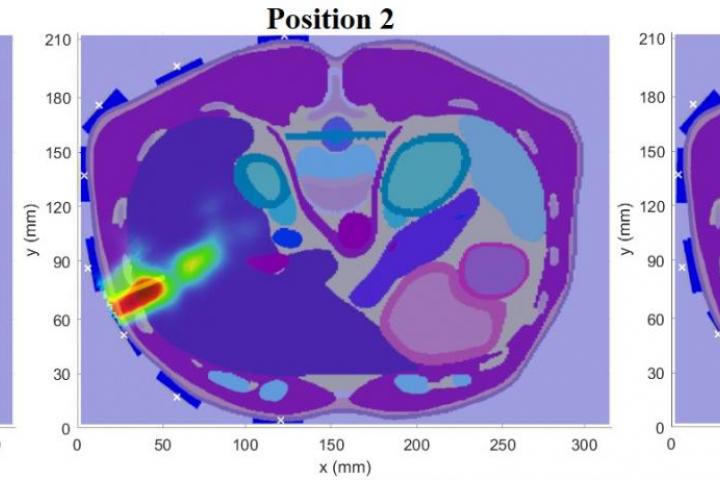
In a publication entitled Microwave Catheter Navigation System for the Radiofrequency Liver Ablation, Bc. Jakub Kollár together with co-authors Dr. Dřížďal, prof. J. Vrba, doc. D. Vrba, Ing. Pokorný, Dr. Novák and doc. Fišer deals with the development of an innovative navigation system for radiofrequency (RF) liver ablation based on ultra-wideband (UWB) radar. The main objective was to design a system for navigation of the operator inserting the RF ablation catheter for liver tumor ablation. Current navigation systems use ionizing radiation (X-ray and CT) or ultrasound.
The published system consists of eight UWB antennas that are fixed in a single plane to the patient's torso. The antennas transmit successively short UWB pulses that last approximately 1 nanosecond. The electromagnetic wave propagates through the patient's body and, if it hits the catheter, is reflected and picked up by the surrounding antennas. From the time delay between the transmitted and received UWB pulse, the position of the catheter can then be accurately reconstructed. The UWB radar system was implemented and experimentally verified by a series of measurements during the development. The spatial variation of the catheter position detection was approximately ± 3 mm.
Bc. Jakub Kollár works on the second generation of the system. The new system will be equipped with smaller antennas, which will allow to extend the system for 3D imaging. Another ambitious goal is to monitor the progress of the ablation itself. If equally encouraging experimental results are achieved, ex-vivo tissue experiments and possibly animal experiments will be performed.
The development of a new UWB radar system to navigate a radiofrequency catheter for liver tumour ablation will improve the orientation of the physician when inserting the catheter into the target area, thereby increasing the safety and speed of the procedure. "In the following development, we would like to upgrade the system to allow real-time and 3D monitoring of the amount of tissue ablated. This would increase the accuracy of the treatment," adds doc. Ing. Ondřej Fišer, Ph.D., member of the FBMI Bio-electromagnetism research team.
Article is available here: https://www.mdpi.com/2072-6694/14/21/5296
